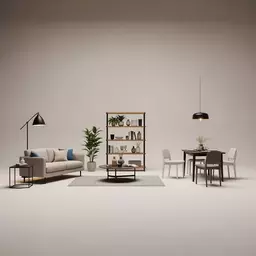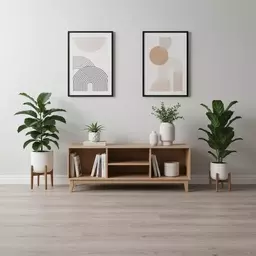Eco-Friendly Furniture Brands in Australia
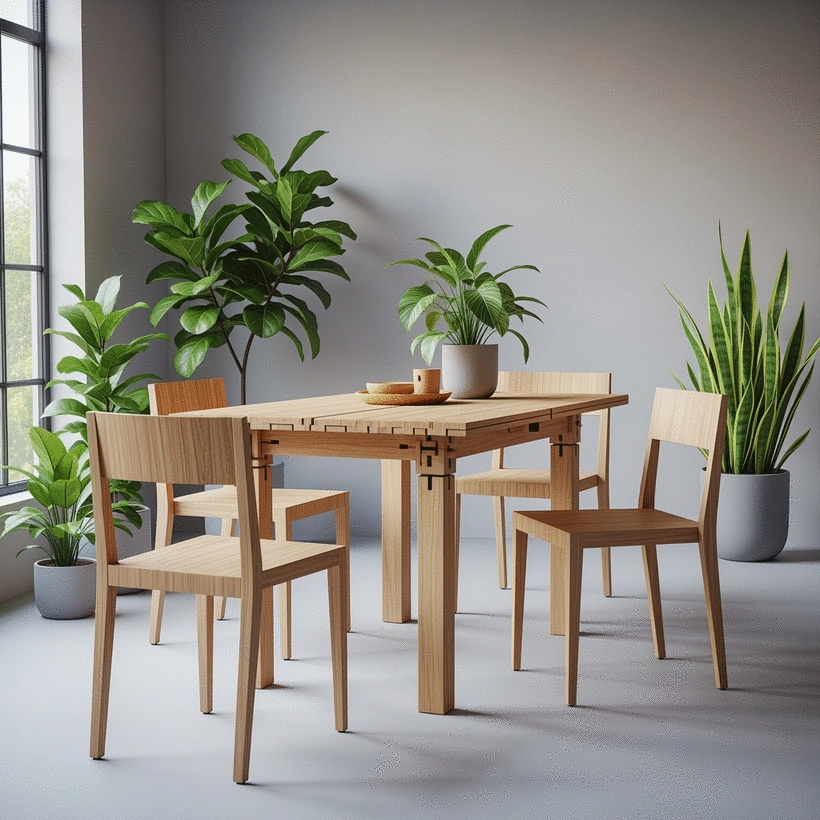
As we navigate the evolving landscape of eco-friendly furniture in Australia, understanding how our choices impact the environment is crucial. This guide sheds light on the essentials of sustainable furniture and empowers you to make eco-conscious decisions that resonate with your values.
What You Will Learn
- Key factors that define eco-friendly furniture, including sustainable materials and non-toxic finishes.
- The importance of choosing sustainable furniture for reducing waste and promoting local economies.
- Innovative materials like bamboo and recycled plastics that enhance both sustainability and design.
- Practical checklists to guide your purchasing decisions, ensuring you choose truly eco-friendly options.
Key Considerations for Eco-Friendly Flatpack Furniture
When selecting eco-friendly flatpack furniture, understanding the materials, the brand's commitment, and the product's longevity are crucial. The visual below highlights key factors to help you make informed, sustainable choices, much like those explored in our guide to sustainable flatpack furniture in Australia.
What Makes Furniture Eco-Friendly?
Sustainable Materials (e.g., Bamboo, Reclaimed Wood)
Non-Toxic Finishes
Durable Design & Longevity
Recyclable Components
Buyer's Checklist
- Research Materials Sourcing
- Check Certifications (e.g., FSC, GREENGUARD)
- Brand Manufacturing Transparency
- Modular/Repairable Design
Impact & Benefits
- Reduces Carbon Footprint
- Supports Local Economies
- Improves Indoor Air Quality
- Promotes Responsible Consumption
Understanding the Eco-Friendly Flatpack Furniture Landscape in Australia
As a passionate advocate for sustainable living, I find the rise of eco-friendly flatpack furniture in Australia incredibly exciting! The landscape is evolving, offering consumers a chance to make more environmentally conscious choices without sacrificing style or functionality. In this section, we'll explore what makes furniture eco-friendly, why sustainability matters in our homes, and the impact of materials on design.
What Makes Furniture Eco-Friendly?
When we talk about eco-friendly furniture, we refer to pieces designed with the environment in mind. This includes furniture made from sustainable materials, produced in ethical conditions, and designed for durability. Here are key factors that contribute to eco-friendliness:
- Use of renewable resources, such as bamboo or reclaimed wood.
- Non-toxic finishes and adhesives that minimize harmful emissions.
- Durable design that reduces the need for frequent replacements.
- Compostable or recyclable components at the end of life.
Understanding these elements helps consumers like you make informed choices. At Flatpack Hub, we believe that every decision counts when it comes to creating a sustainable living space!
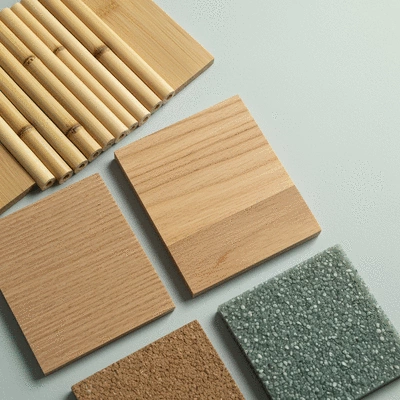
Importance of Sustainable Furniture in Australian Homes
Why should we prioritize sustainable furniture in Australia? The answer is simple: our choices impact the environment! By opting for eco-friendly options, we can reduce waste, lower carbon footprints, and foster a healthier living environment. Here are some reasons to consider:
- Promotes sustainability and responsible consumption.
- Encourages local economies by supporting Australian brands.
- Contributes to better indoor air quality for you and your family.
Every piece of furniture we bring into our homes is an opportunity to align our living spaces with our values. It's about creating a sanctuary that reflects who we are while being kind to our planet! For practical tips on how to incorporate these values, consider our guide on flatpack furniture and sustainable living.
Exploring Eco-Friendly Materials and Their Impact on Design
The materials used in flatpack furniture play a pivotal role in its sustainability. A growing number of brands are embracing innovative materials that not only support eco-consciousness but also enhance design aesthetics. Here are some exciting materials to consider:
- Bamboo: A fast-growing, renewable resource that's both sturdy and stylish.
- Recycled plastics: Transforming waste into durable furniture options.
- Reclaimed wood: Repurposing existing materials adds character and reduces deforestation.
By understanding the impact of these materials, we can appreciate how they influence the design and functionality of our chosen furniture. At Flatpack Hub, we’re committed to guiding you through these options so you can make choices that resonate with your eco-friendly lifestyle!
Pro Tip
When shopping for eco-friendly flatpack furniture, always look for the FSC certification. This ensures that the wood used is sourced from responsibly managed forests, making a significant difference in promoting sustainable practices. It not only supports the environment but also assures you that your purchase is contributing to the health of our planet!
Final Thoughts on Investing in Eco-Friendly Flatpack Furniture
As we journey through the world of eco-friendly flatpack furniture, it's essential to consider not just the immediate appeal of a product, but also its long-term impact on our planet. Investing in quality pieces that prioritize sustainability can enhance your living space while supporting a healthier environment. Remember, it’s all about making informed choices that resonate with your values!
Take a moment to reflect on what you're looking for when it comes to furniture. Is it simply about filling your space, or are you aiming to create a harmonious atmosphere that aligns with sustainable practices? Choosing quality over quantity is a step towards a more responsible lifestyle, and it’s something I encourage all my readers to embrace.
Weighing Your Options: Choosing Quality Over Quantity
- Consider the lifespan of the furniture: Will it endure the test of time?
- Evaluate the materials used: Are they sustainable and eco-friendly?
- Think about versatility: Can the piece adapt to your changing needs?
- Look for brands with a commitment to sustainability: Are they transparent about their practices?
When you focus on these key factors, you're not just purchasing furniture; you're making a statement about your values and your commitment to a sustainable future. Remember, investing in a few high-quality items can often be more cost-effective than repeatedly replacing cheaper alternatives.
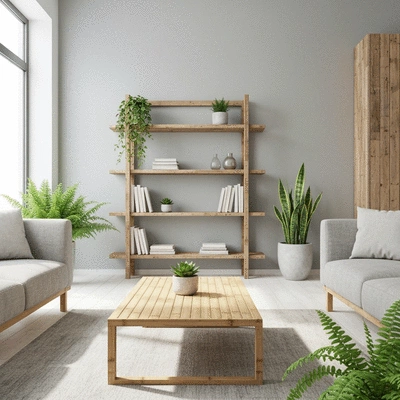
Practical Buyer’s Checklist for Eco-Friendly Furniture
Key Factors to Evaluate Before Purchases
Before you make a purchase, it's crucial to have a checklist in hand. This will help guide your decision-making process and ensure that you're investing in truly eco-friendly options. Here’s a handy checklist to keep in mind, similar to the considerations in our flat-pack furniture shopping checklist:
- Research the materials: Are they sourced sustainably?
- Check for certifications: Does the furniture have eco-labels or sustainability certifications?
- Consider the manufacturing process: Is the brand transparent about their production methods?
- Look for modular designs: Can the furniture be easily repaired or upgraded?
This checklist will help you sort through the clutter of flatpack options. As a DIY enthusiast, I often find myself referring back to these points, and they have guided me toward making smarter purchases for my home!
Using Customer Reviews to Inform Your Decision
Don't underestimate the power of customer reviews when shopping for eco-friendly furniture. Real experiences can provide insights that product descriptions often miss. Look for feedback that highlights aspects like assembly ease, durability, and overall satisfaction with eco-friendly features.
- What do other customers say about the product's sustainability?
- Are there common issues that arise in reviews?
- Do customers feel the product met their eco-friendly expectations?
By taking the time to read reviews, you can gain a clearer picture of what to expect from your purchase, which is incredibly valuable when investing in sustainable furniture.
Understanding Furniture Certifications and Eco Labels
Furniture certifications and eco labels can be a bit overwhelming at first, but they play a crucial role in identifying truly sustainable products. Familiarizing yourself with these certifications can enhance your purchasing confidence. Here are a few you should look out for:
- FSC (Forest Stewardship Council): Ensures wood is sourced from responsibly managed forests.
- GREENGUARD: Certifies low chemical emissions for better indoor air quality.
- Energy Star: Indicates energy-efficient manufacturing and operational processes.
Understanding these labels can help you make more informed choices, ensuring that your purchases align with your values of sustainability and functionality!
Frequently Asked Questions (FAQs)
- What makes furniture eco-friendly?
Eco-friendly furniture is made from sustainable materials (e.g., bamboo, reclaimed wood), uses non-toxic finishes, is designed for durability, and includes recyclable components. - Why is sustainable furniture important for Australian homes?
Sustainable furniture reduces waste, lowers carbon footprints, promotes healthier indoor air quality, and supports local economies and responsible consumption. - What are some common eco-friendly materials used in flatpack furniture?
Common materials include bamboo, recycled plastics, and reclaimed wood, all chosen for their environmental benefits and design versatility. - What certifications should I look for when buying eco-friendly furniture?
Key certifications include FSC (Forest Stewardship Council) for responsibly sourced wood, GREENGUARD for low chemical emissions, and Energy Star for energy-efficient production. - How can I ensure my eco-friendly flatpack furniture lasts longer?
Choose furniture with durable designs, modular components for easy repair, and brands committed to sustainability. Prioritizing quality over quantity also contributes to longevity.
Encouraging Sustainable Choices in Your Furniture Journey
Joining the Eco-Friendly Movement in Australia
The eco-friendly movement is growing rapidly in Australia, and as part of this community, you have the opportunity to contribute to a more sustainable future. By choosing eco-friendly flatpack furniture, you’re not only enhancing your home but also supporting practices that benefit our environment.
Every purchase we make sends a message about our values. I encourage you to share your journey with others, whether through social media or local community groups. It’s amazing how a simple conversation can inspire others to think about their choices!
Connecting with Eco-Conscious Consumers in the Australian Market
Connecting with other eco-conscious consumers can enrich your experience and broaden your perspective on sustainable living. Consider joining local groups, attending workshops, or participating in community events focused on sustainable practices. Engaging with like-minded individuals can provide support and inspiration as you navigate your furniture journey.
- Join online forums or social media groups dedicated to sustainable living.
- Participate in local markets or trade fairs showcasing eco-friendly brands.
- Attend workshops on DIY furniture projects and sustainability.
By fostering these connections, you’ll not only deepen your understanding of eco-friendly options but also contribute to a collective movement towards a more responsible and sustainable lifestyle.
Recap of Key Points
Here is a quick recap of the important points discussed in the article:
- Eco-friendly furniture is made from sustainable materials, produced ethically, and designed for durability.
- Choosing sustainable furniture promotes a healthier living environment and supports local economies.
- Innovative materials like bamboo, recycled plastics, and reclaimed wood enhance both sustainability and design aesthetics.
- Before purchasing, evaluate materials, certifications, and the manufacturing process to ensure eco-friendliness.
- Leveraging customer reviews can provide valuable insights into the sustainability and functionality of furniture.
- Understanding furniture certifications like FSC and GREENGUARD helps in making informed choices.
- Engaging with eco-conscious communities can enrich your sustainable living journey and inspire change.




